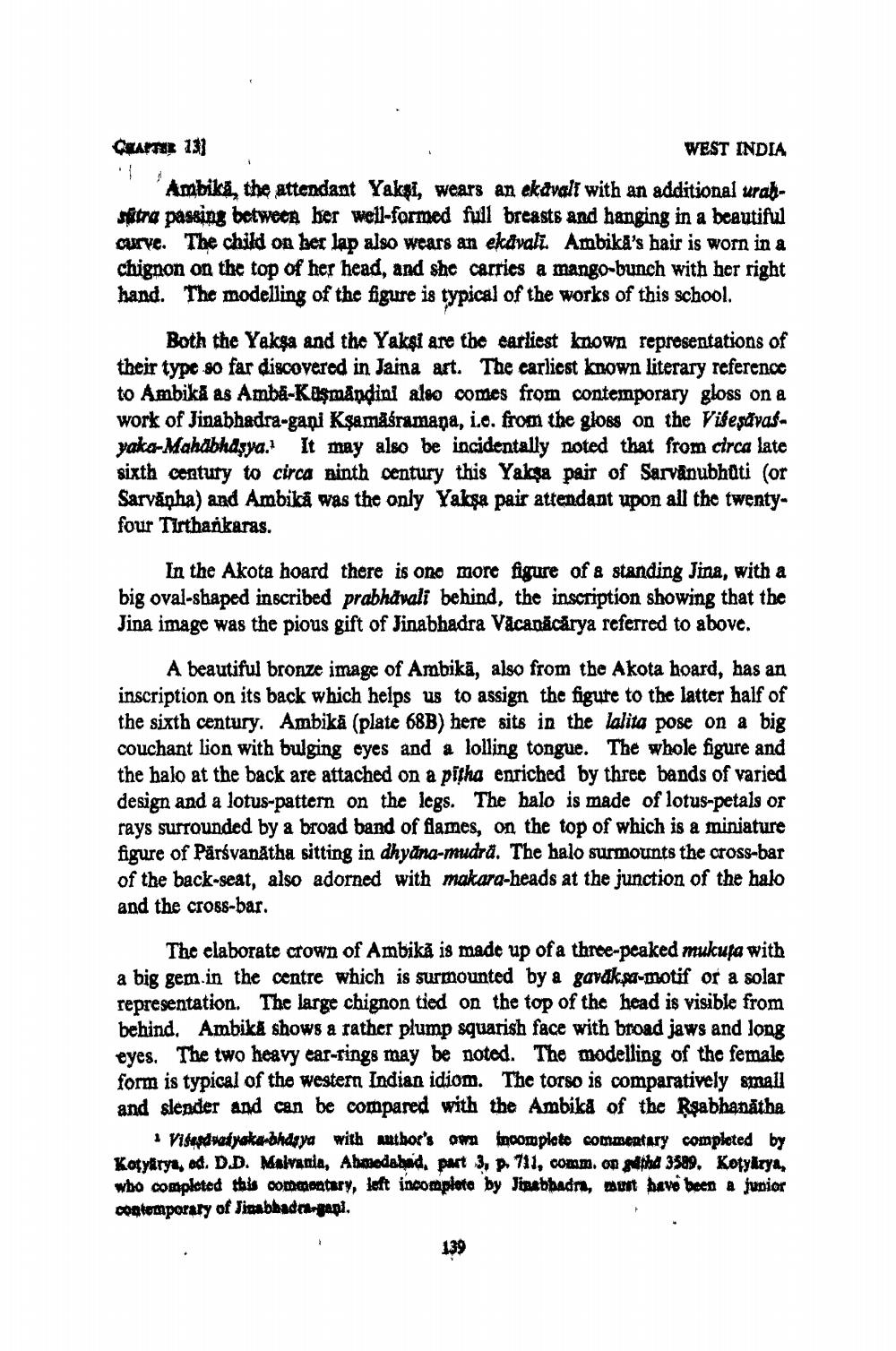________________
Cuarta 133
WEST INDIA Ambika, the attendant Yakai, wears an ekavalt with an additional urahfiltra passing between ber well-formed full breasts and hanging in a beautiful curve. The child on her lap also wears an ekávali. Ambika's hair is worn in a chignon on the top of her head, and she carries a mango-bunch with her right hand. The modelling of the figure is typical of the works of this school.
Both the Yakga and the Yaksi are the earliest known representations of their type so far discovered in Jaina art. The carlicst known literary reference to Ambikä as Amba-Kemandini also comes from contemporary gloss on a work of Jinabhadra-gani Kşamåśramapa, i.c. from the gloss on the Vibesăvas. yaka-Mahabhazya. It may also be incidentally noted that from circa late sixth century to circa ninth century this Yaksa pair of Sarvanubhuti (or Sarvāṇha) and Ambika was the only Yaksa pair attendant upon all the twentyfour Tirthankaras.
In the Akota hoard there is one more figure of a standing Jina, with a big oval-shaped inscribed prabhavali behind, the inscription showing that the Jina image was the pious gift of Jinabhadra Vacanicărya rcferred to above
A beautiful bronze image of Ambikā, also from the Akota hoard, has an inscription on its back which helps us to assign the figure to the latter half of the sixth century. Ambika (plate 68B) here sits in the lalita pose on a big couchant lion with bulging eyes and a lolling tongue. The whole figure and the halo at the back are attached on a pitha enriched by three bands of varied design and a lotus-pattern on the legs. The halo is made of lotus-petals or rays surrounded by a broad band of flames, on the top of which is a miniature figure of Pärsvanatha sitting in dhyana-mudra. The halo surmounts the cross-bar of the back-seat, also adorned with makara-heads at the junction of the halo and the cross-bar.
The elaborate crown of Ambikā is made up of a three-peaked mukuta with a big gem.in the centre which is surmounted by a gavdkw-motif or a solar representation. The large chignon tied on the top of the head is visible from behind, Ambika shows a rather plump squarish face with broad jaws and long eyes. The two heavy ear-rings may be noted. The modelling of the female form is typical of the western Indian idiom. The torso is comparatively small and slender and can be compared with the Ambika of the Rsabhanātha
* Viladratyakamandaya with author's own incomplete commentary completed by koyaryu, ad. D.D. Malvania, Ahmedabad, part 3, p. 711, comm. on dtd 3589. Kotykrya, who completed this commentary, left incomplete by Jirabhadr, but have been a junior contemporary of Jisabhadra gapl.




